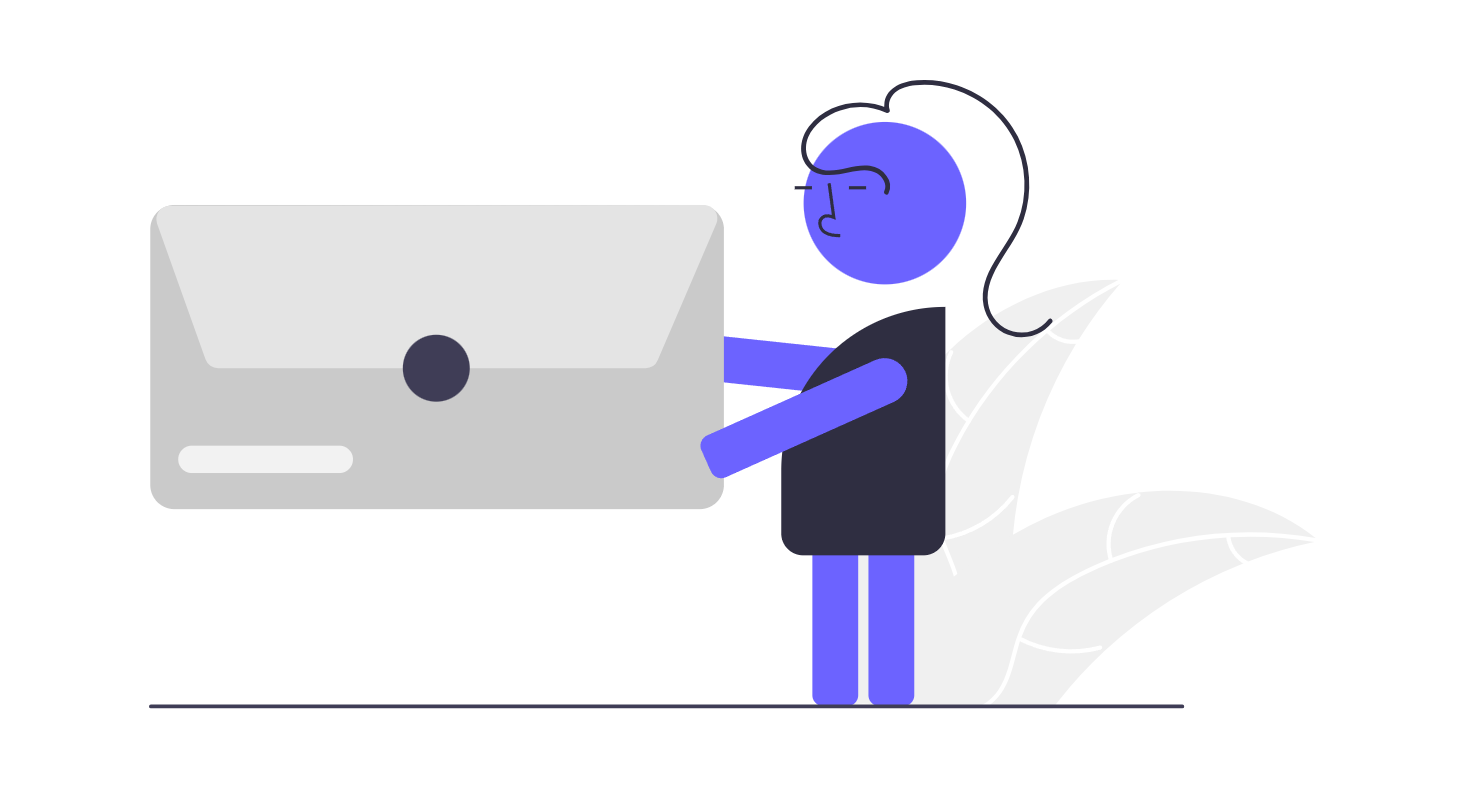AI Won’t Eat Your Job, It’ll Change It: Your Playbook for Thriving in the New Work World
I. Introduction: Panic or Prepare? The AI Job Question
Heard the doom-and-gloom predictions about AI snatching your livelihood? Let’s cut through the hype. Artificial intelligence is indeed rapidly reshaping the job market – displacing some roles, absolutely, but also igniting a surge of many more. This isn’t a simple swap; it’s a profound metamorphosis of how we work. It’s less about being outright replaced by a robot and more about how we adapt to a landscape augmented by intelligent machines.
The good news? You’re not a passive observer in this unfolding drama! This isn’t some predetermined sci-fi dystopia, but rather, an unprecedented opportunity to adapt, evolve, and ultimately, level up your skillset.
In this post, we’ll dissect the evolving work landscape, draw wisdom from historical parallels, navigate the ethical minefields, peek into the likely trajectory of AI’s future, and, most importantly, arm you with actionable strategies to not just survive, but thrive.
II. A Quick Trip Down Memory Lane: We’ve Been Here Before (and survived!)
Let’s face it: anxieties about technology stealing jobs are as old as technology itself. We seem to perpetually fear the new. But this isn’t the first time a technological leap has sent shivers down the collective spine of the workforce.
Consider these pivotal moments:
- The Agricultural Revolution: The shift from manual farm labor to mechanized agriculture didn’t eliminate farming; it spurred specialized roles in agricultural technology and fueled the growth of urban centers. People didn’t become obsolete; their work evolved.
- The Industrial Revolutions: Skilled artisans felt the cold breath of machines as factories rose. Remember the Luddites, those textile workers who famously smashed the power looms they thought would destroy their livelihoods? Yet, factory jobs boomed, creating new demands for labor and expertise, albeit different ones.
- The Computer Age: Remember the “human computers,” individuals meticulously performing calculations by hand? They were replaced by machines, yes, but the IT sector exploded, creating a universe of entirely new professions that were previously unimaginable.
The key takeaway shimmering through these historical echoes is this: Each major technological wave has brought disruption, undoubtedly. But it has also inevitably led to new job creation, spurred economic growth, and reshaped the very fabric of society. The constant, reliable, through-line is the vital importance of adaptation.
III. The Current Vibe: What Everyone’s Saying About AI and Work
So, what’s the current consensus, the shared understanding amongst experts and workers, regarding AI’s role in the present and future?
- The Experts Weigh In: The dominant narrative points to a multifaceted impact. Firstly, they are acknowledging significant job displacement, particularly for routine, repetitive tasks (think data entry, basic customer service, or some accounting functions). Projections vary, naturally, but many suggest millions of jobs could be significantly altered by 2030. However, this is only one part of the picture. Experts also highlight the powerful potential for job augmentation – AI acting as a force multiplier, automating mundane tasks and liberating human workers to focus on more complex, creative, and strategic endeavors. Lastly, and crucially, there’s the promise of job creation. Entirely new roles are already emerging: AI Engineers, Data Scientists, AI Ethicists, and even the enigmatic Prompt Engineers. The general consensus leans towards a net gain in jobs over the long term.
- How Workers Feel: The ground-level sentiment is a mix of apprehension and cautious optimism. Large-scale surveys reveal widespread concern, with the vast majority (around 85%) anticipating AI’s impact on their jobs. Replacement anxieties are palpable, particularly amongst those in entry-level positions. But it’s not all doom and gloom. Many also express a belief that AI could enhance their job performance, boosting efficiency and overall satisfaction. Crucially, there’s a resounding call for training. Workers crave clear guidelines and resources to navigate the AI-driven workplace.
- What Organizations Are Doing: On the organizational front, a strategic shift is underway. Companies are moving beyond simply deploying AI tools; they’re actively transforming entire workflows and redefining job roles. They’re investing heavily in reskilling and upskilling initiatives to cultivate internal AI expertise. The prevailing vision is one of a human-AI partnership, where AI provides speed and data-driven insights, while humans contribute empathy, critical thinking, and complex problem-solving skills.
IV. The Elephant in the Room: AI’s Tricky Side (Controversies and Debates)
While the potential benefits of AI are undeniable, it’s crucial to acknowledge the inherent complexities and potential pitfalls. These are some of the most pressing questions:
- The “Net Gain” Debate: Even with projections indicating a net gain in jobs, the transition period could be fraught with challenges. Widespread temporary unemployment is a real possibility. The question lingers: Is this time truly different, not just in magnitude but also in the sheer speed of change?
- The Fairness Factor (Economic Inequality): Will AI exacerbate existing inequalities? Will it disproportionately benefit the highly skilled, widening the wealth gap and leaving vulnerable populations even further behind? This is a critical ethical consideration.
- Bias and the “Black Box”: AI systems, particularly those based on machine learning, can inherit and amplify biases present in their training data. This can lead to unfair or discriminatory outcomes in areas like hiring or performance management. How do we ensure transparency, accountability, and fairness in these systems?
- Privacy Invasion: AI’s insatiable hunger for data raises serious concerns about workplace surveillance and the potential misuse of personal information. Striking a balance between data-driven insights and individual privacy rights is paramount.
- Policy Puzzles: These questions inevitably lead to complex policy considerations:
- Universal Basic Income (UBI): Could UBI serve as a crucial safety net in an AI-driven economy, providing a basic standard of living regardless of employment status? It’s a popular idea, yet fraught with practical and philosophical challenges.
- Regulation: Governments worldwide are scrambling to develop ethical frameworks and policies to govern the development and deployment of AI. The EU AI Act is a prime example, as are various calls for “robot taxation.”
- Worker Voice: It’s crucial to include workers in decisions about AI implementation. Human-centric design principles are essential to ensure that AI empowers, rather than alienates, the workforce.
V. Crystal Ball Gazing: Where AI is Headed Next (and what it means for you)
Peering into the future, several key trends emerge:
- Smarter, Smaller, Everywhere AI:
- Generative & Multimodal AI: AI that understands and creates across text, images, and sound will become increasingly sophisticated and seamlessly integrated into our lives.
- “AI Agents”: Autonomous systems that learn on the job, anticipate our needs, and manage complex tasks with minimal human intervention are on the horizon.
- On-Device AI: Running powerful AI models directly on our smartphones and wearables will enhance privacy and enable offline capabilities.
- New Industries, New Skills:
- Revolutionizing Sectors: Healthcare (diagnostics, personalized treatment), finance (fraud detection), education (adaptive learning), software development (code generation), cybersecurity, autonomous vehicles, and environmental sustainability are all poised for radical transformation.
- Emerging Roles: The demand for AI developers, data analysts, and specialists in AI ethics and governance will continue to grow exponentially.
- The Human Element Becomes Even More Valuable: As AI assumes more cognitive tasks, uniquely human attributes like emotional intelligence, creativity, critical thinking, and complex problem-solving will become even more highly prized assets.
VI. Your AI Survival Kit: Practical Tips to Not Just Cope, but Conquer
Forget “survival.” This is about thriving in the age of AI. Here’s your toolkit:
- Cultivate an “AI Augmentation” Mindset: Shift your perspective. View AI not as a replacement, but as a powerful co-pilot, a tool to amplify your existing capabilities. Ask yourself: “How can AI make me better, faster, and smarter?”
- Embrace Lifelong Learning (It’s Non-Negotiable!): Continuous learning is no longer optional; it’s a fundamental requirement for navigating the evolving job market.
- AI Literacy: Grasp the basics of AI: its applications, limitations, and potential impact on your industry.
- Prompt Engineering: Master the art of communicating effectively with AI. Learning how to craft precise and effective prompts is a critical new skill.
- Technical AI Skills: Consider foundational courses in data analysis, machine learning basics, or relevant programming languages like Python.
- Double Down on Uniquely Human Skills:
- Creativity & Innovation: AI can generate outputs, but you bring true originality and novel ideas to the table.
- Critical Thinking & Complex Problem-Solving: AI provides data; you interpret, contextualize, and solve ambiguous, real-world problems.
- Emotional Intelligence: Empathy, communication, collaboration, and leadership are essential for effective human interaction and teamwork.
- Adaptability & Resilience: Embrace change and be willing to learn new tools and ways of working.
- Ethical Reasoning: Be the human compass, ensuring AI is used responsibly and ethically.
- Wield AI Tools Like a Pro:
- Integrate AI into Your Workflow: Automate routine tasks, generate content ideas, and analyze data more efficiently. Document your experiments and track your progress.
- Leverage AI for Career Growth: Use AI for resume optimization, personalized learning recommendations, and even interview practice simulations.
- Critically Review AI Outputs: Never blindly trust AI. Always verify, edit for accuracy, and inject your unique human perspective.
- Stay Informed and Network:
- Keep Up: Follow industry trends, subscribe to relevant newsletters, and attend webinars.
- Connect: Network with professionals already using AI in their work. Share insights and learn best practices.
- Take Initiative: Propose small, self-directed AI projects in your current role to demonstrate your readiness and impact.
VII. Conclusion: The Future is Human-AI Hybrid
AI is not merely replacing; it’s fundamentally transforming the world of work. History, expert opinions, and organizational strategies all converge on this pivotal shift.
The future isn’t a zero-sum game of AI versus humans. It’s about humans with AI. Your adaptability, your willingness to learn, and your uniquely human skills are your superpowers in this new landscape. Embrace the change, cultivate your AI acumen, and prepare to conquer the exciting, evolving world of work!

